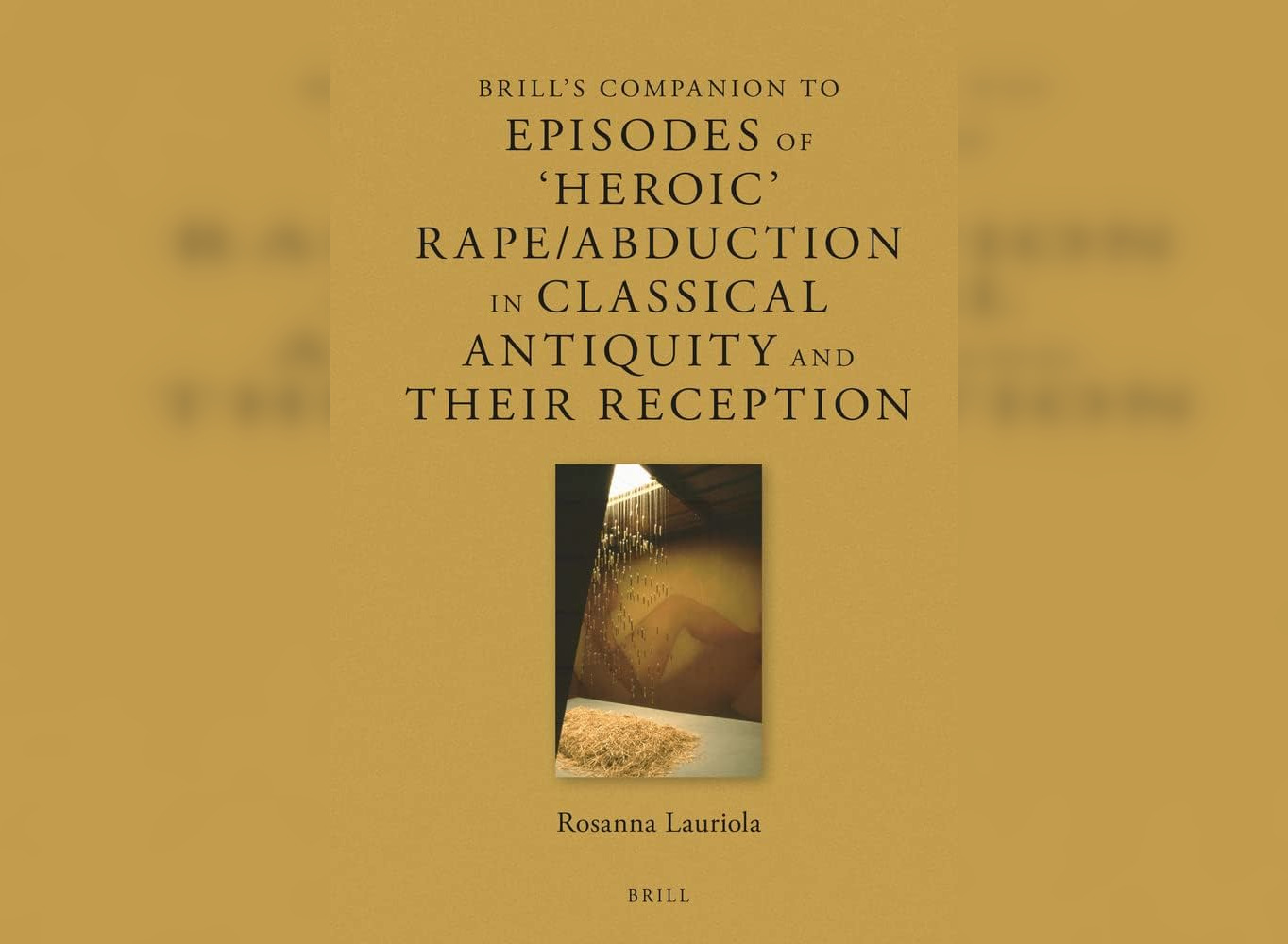
News
Progressive Labor Party Organizes Solidarity March With Harvard Yard Encampment

News
Encampment Protesters Briefly Raise 3 Palestinian Flags Over Harvard Yard

News
Mayor Wu Cancels Harvard Event After Affinity Groups Withdraw Over Emerson Encampment Police Response

News
Harvard Yard To Remain Indefinitely Closed Amid Encampment

News
HUPD Chief Says Harvard Yard Encampment is Peaceful, Defends Students’ Right to Protest
‘Episodes of ‘Heroic’ Rape/Abduction in Classical Antiquity’ Review: A Fresh Academic Perspective
4 Stars

This article contains mentions of sexual assault that may be troubling to some readers.
“The aim is to approach [these] stories in a way that allows space for women.” So begins “Brill’s Companion to Episodes of ‘Heroic’ Rape/Abduction in Classical Antiquity and Their Reception,” a new academic book written by Rosanna Lauriola, an Adjunct Assistant Professor at Randolph Macon College. Lauriola’s newest book focuses on classical myths with plots centered on the abductions and rapes of women. Specifically, Lauriola hones in on four myths — the Greek god Zeus’s pursuits of Europa, Danaë, Io, and Antiope — and examines how receptions of these myths have revolved around dismissals of violence and misunderstandings of female perspectives. In doing so, Lauriola crafts a fresh academic analysis of ancient myth, although at times the book meanders from its main points.
The book’s title — “Episodes of ‘Heroic’ Rape/Abduction in Classical Antiquity” — reveals its focus: It interrogates ancient stories that involve assault, especially sexual assault of young women. Lauriola uses her book to reevaluate the reception that these violent myths have received throughout history and in the modern day. The work is unique due to its emphasis on female perspectives and its ability to recontextualize ancient myths for modern audiences. Lauriola shows that both ancient Greek and Roman societies, as well as more recent scholarly literature, have always seen the abundant rapes and abductions in ancient myths in an everyday context that does not focus on the inherent violence of such acts. By reminding her audience that these rapes and abductions are violent in nature and their depictions often ignore women’s points of view, Lauriola offers a perspective on ancient sources that other scholarship often glosses over.
Lauriola convincingly supports her argument about classical myths by using concrete examples from history. After explaining each myth in detail, the book then delves into the long legacy that the myths have left behind in ancient and modern culture. Readers will recognize the reinterpretations of ancient myths that Lauriola references and understand how their legacy is present in the modern world. For instance, the book references Titian’s “Rape of Europa,” a painting that depicts the princess Europa’s abduction by Zeus in the form of a bull. Lauriola analyzes the painting — which will be familiar to Bostonians who have visited the Isabella Stewart Gardner Museum — through a feminist lens that emphasizes Europa’s personhood and the horror of her situation. Lauriola also draws a fascinating parallel between Lavinia in Shakespeare’s “Titus Andronicus” and Antiope, another woman that Zeus pursued in ancient myth, by displaying how Shakespeare often relied on ancient stories to craft his famous plays. In the book, these two examples show that violent encounters with mythological women have been turned into art and often even glorified instead of recognized as violence.
While the viewpoints that Lauriola offers reinvigorate ancient myths, some authorial choices distract readers from the book’s goals. One weak aspect of the book was its use of footnotes. While footnotes are often helpful to guide academic readers to additional resources, Lauriola’s commentary within these notes devolves into digressions that sometimes take up near-entire pages of their own. Instead of integrating background information, referential material, or certain vocabulary into the text, Lauriola places this information into the footnotes. The book would have benefited if it had incorporated the footnotes’ digressions into the central commentary. It was distracting to constantly switch between the main text and footnotes and overall the book would have read more smoothly if the footnotes were used as signposts pointing to additional sources rather than as space for Lauriola’s somewhat tangential explanations.
Despite the weakness of its footnotes and digressions, “Brill's Companion to Episodes of ‘Heroic’ Rape/Abduction in Classical Antiquity and Their Reception” is overall a strong analysis of ancient myth. It treats ancient examples of violence with meticulous attention that they have up to this point rarely been afforded in scholarship. Lauriola’s book will be useful to academics who wish to analyze ancient myth through an outlook that centers women’s experiences, and it is applaudable for its tact and respect.
—Staff writer Hannah E. Gadway can be reached at hannah.gadway@thecrimson.com.
Want to keep up with breaking news? Subscribe to our email newsletter.
